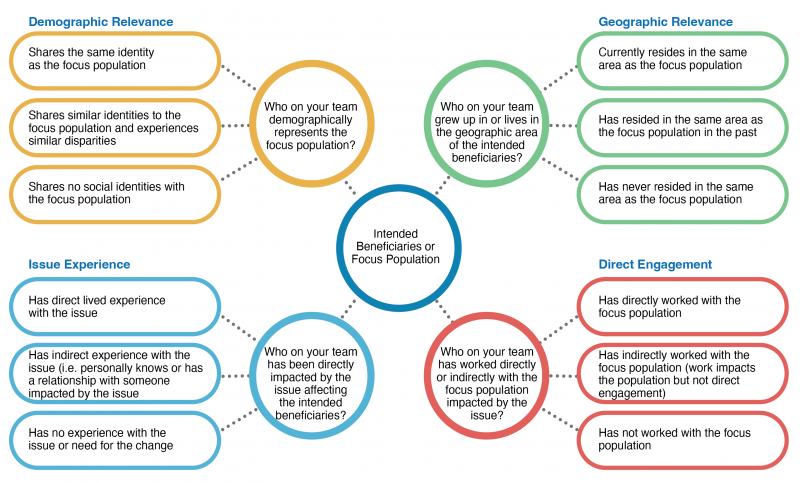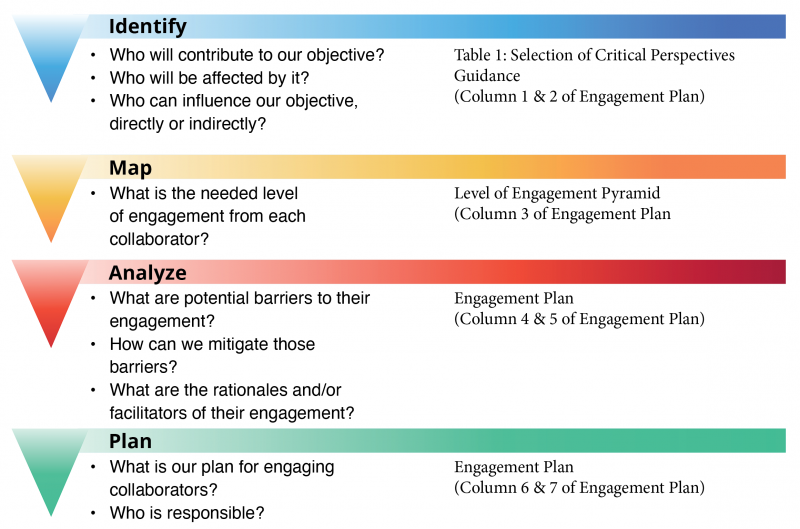
How much time do you spend working in teams? Are you empowered to optimize this collective time by bringing together a variety of thinkers who push you to be better? Are you inspired to stay engaged and support your teammates to do the same? Let’s unpack why this is important and how we make this happen.
According to the Harvard Business Review, diverse teams are simply smarter.
Building a team that is representative of diverse voices and perspectives is critical. Teams with diverse perspectives bring historical and cultural knowledge, successes, challenges, and rich lived experiences. Such differences allow the team to overcome old ways of thinking and sharpen how a team functions. Using qualitative and quantitative data from those with direct knowledge of the context and a given situation, they are more creative and innovative (Rock & Grant, 2016).
Specifically, Rock and Grant (2016) in an analysis of a variety of reports and studies, suggest that diverse teams:
- consistently examine facts and remain objective
- encourage greater scrutiny of each member’s actions
- keep joint cognitive resources sharp and vibrant
- become more aware of their own biases and entrenched ways of thinking that can blind them to key information that may increase the risk of making errors
- outperform homogenous teams’ decision making because they process information more carefully
Structure and participation are the two major components of equitable teams.
An equitable structure, or how we build and connect teams, is an important first step and one that should be revisited for efficacy and efficiency over time. Team members must be selected to represent different perspectives of the work in systems, from policy makers and technical assistance providers to those who will use or benefit from the use of a program, practice, or innovation. They must also represent the varied nature of expertise and experiences within a system. This allows the team to represent the true needs and assets of the community where the innovation will be used. In addition to having the “right” team members, a structure of linked teams at every level of the system allows for cohesion or alignment of efforts toward our ultimate goal of improving outcomes for students. This linked teaming structure allows information to flow up and down the system in order to remove barriers and sustain effective practices. It builds trust in the process and is associated with higher productivity and better-quality products.
“Trust the process! Even if it isn’t completely coming together at the beginning, it will start to come together.
And trust ourselves as the experts who are reflective practitioners and who are grounded in research and best practices."
-Wisconsin Team Member
It isn’t enough to bring great people together. Effective leaders ensure that there is equitable participation or engagement within and between teams. To do so requires careful and ongoing attention to three key aspects of team development:
- Team members should feel as if their contributions, time, and effort (and that of others) are “credible, relevant, and legitimate”.
- Considerations of team members' motivation and interest in participation, expertise and ability to participate
- Avoiding or managing predictable problems within teams such as member fatigue (especially when the same people are on many teams) or frustration when implementation gets tough
"Empower others with leadership and look for opportunities for different perspectives; cultivate ownership and a collective view."
-Liz Newell, Michigan Department of Education
How do we get started? NIRN offers a valuable resource.
The first resource, the Stakeholder Engagement Guidance Handout (revised in 2023 to become the Guidance for Engaging Critical Perspectives tool) can be used to develop or strengthen a team that equitably represents your context. This tool encourages leaders to examine strengths and gaps in team participation in four areas:
- Issue Experience: How many people on your team have been directly impacted by the issue?
- Demographic Relevance: How many people on your team demographically reflect the focus population?
- Direct Engagement: How many people work directly or indirectly with a focus population?
- Geographic Relevance: How many people on your team grew up in or live in the neighborhood you are serving?

When teams are representative of the context, buy-in and a collective commitment to accountability is viewed as a shared responsibility.
“Everyone can see they have a role to play.”
-Kentucky Family Advocate
The resource also provides key questions to identify, analyze, map, and plan for team development and equitable participation of team members.

Equitable participation and structure increases the probability that the innovation or change idea will be used and achieve desired outcomes. Evidence suggests when teams are composed of participants from every level of the system and engaged in the identification, use, and on-going evaluation of a practice, ownership is cultivated, a collective view is institutionalized, and innovations are sustained (Cabassa et el., 2014).
Equitable representation from every level of the system ensures the innovation will be teachable, learnable, doable, and easily assessed at the practice level.
Steven Charleston, in Ladder to the Light, provides Native American wisdom and describes how decisions are made at a community gathering. Charleston’s description provides a strong rationale for why equitable team participation and structure is paramount to understanding the needs of the people as they imagine a different future.
“Each person must be heard and allowed to speak. And to speak and to speak until the words flow like the sound of water, a timeless current of experience, surrounding the speakers, washing over them, mixing them like pebbles in a stream…for their language is the movement of change that takes as much time as it needs…for in their words is the confirmation of what we have always known and the invitation to know what we have only begun to imagine.”
Related Resources
Interested in trying your hand at equitable team development?
-
Try the Building Teams Lesson. After completing this lesson you will be able to explain the importance of team cohesion and trust, identify team functions, and utilize the Stakeholder Engagement Guidance Tool to create a diverse team.
Want to know more about a linked team structure?
- Check out Module 3: Implementation Teams on the AI Hub
References
Bammer, G., Smith, M., Kainz, K. L., & Waters, S. (2021, December 21). Stakeholder engagement primer: 6. Making engagement effective. Integration and Implementation Insights. https://i2insights.org/2021/11/18/making-engagement-effective/
Cabassa, Leopoldo L. J., Gomes, A. P., Meyreles, Q., Capitelli, L., Younge, R., Dragatsi, D., Alvarez, J., Manrique, Y., & Lewis-Fernández, R. (2014). "Using the collaborative intervention planning framework to adapt a health-care manager intervention to a new population and provider group to improve the health of people with serious mental illness." Implementation Science, 9(1), 1-11.
Charleston, S. (2021). Ladder to the Light. Broadleaf Books.
Rock, D. & Grant, H. (2016). Why diverse teams are smarter. Harvard Business Review. https://hbr.org/2016/11/why-diverse-teams-are-smarter

